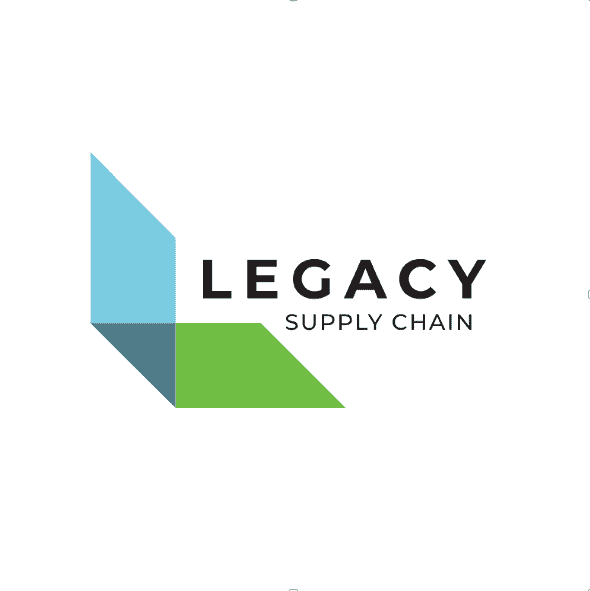Issue 37: Market Update, Rough Roads Ahead for 2023 & More

A WORD FROM LEGACY
Welcome aboard for the May Monthly Shipment, in which we share a few updates and report on some less-than-savory statistics in the trucking industry.
Read on for the latest in logistics from one of the Top 30 Value-Added Warehousing and Distribution 3PLs in the industry — no brag, just fact (story #3).
MARKET UPDATE
How Low Can It Go? The LMI Hits a New Record in April
The Logistics Managers’ Index (LMI) hit a new record in April with a reading of 50.9. Although this is only a slight decrease from the previous month’s reading of 51.1, it represents a new low for the LMI. The decline is partially due to a drop in Inventory Levels, which fell 4.7 points to 50.9. This is likely because shippers are slowly chipping away at their excess inventory, loosening the bottlenecks that have plagued the supply chain since last year.
The decrease in inventories has led to a significant drop in Warehousing Utilization, down by 9.9, resulting in lower Warehousing Prices, particularly for downstream firms. This is the first time the metric has fallen below 70.0 since August 2020. Inventory Costs also fell below 70.0 for the first time in over two years in March, landing at 68.9.
On the other hand, things might be picking up in the transportation sector. After no movement in March, Transportation Utilization is up +5.0 to 55.0, and the contraction of Transportation Prices seems to be slowing, with an April reading of 36.8 (+5.7).
One possible explanation is that, as inventories of consumer and retail goods continue to fall (while remaining stagnant for B2B goods and items tied to the housing market, such as furniture or appliances), warehousing space is finally becoming more available. Consequently, firms are utilizing slightly more transportation capacity to replenish those goods. However, there are no signs of recovery yet in the upstream sector, indicating that carriers transporting larger, bulkier goods still face challenges amid the ongoing freight recession.
If inventory levels continue on this downward trend, we may see more overall movement in the industry — a relief after an extremely slow 2023 thus far.
For a complete overview of the April 2023 LMI across all indices, please refer to the following chart:
LOGISTICS AT A GLANCE
| Index | April 2023 Index | March 2023 Index | Month-Over-Month Change | Projected Direction | Rate of Change |
| LMI® | 50.9 | 51.1 | -0.2 | Growing | Slower |
| Inventory Levels | 50.9 | 55.6 | -4.7 | Growing | Slower |
| Inventory Costs | 65.1 | 66.0 | -0.9 | Growing | Slower |
| Warehousing Capacity | 54.7 | 58.2 | -3.5 | Growing | Faster |
| Warehousing Utilization | 55.1 | 65.0 | -9.9 | Growing | Slower |
| Warehousing Prices | 69.8 | 70.9 | -1.1 | Growing | Slower |
| Transportation Capacity | 70.6 | 71.4 | -0.8 | Growing | Faster |
Also in Today’s Shipment:
- Slow going in the trucking industry as setbacks pile up
- New data partnership could streamline operations in major CA ports
- Armstrong & Associates reports on the State of Warehousing
- Two positive updates for labor contract negotiations, one looming strike
IN THE NEWS
developing: Rough Road Ahead for Trucking Industry in 2023

Freight Trucks at Warehouse
There’s no easy way to say it — the current freight market is experiencing exceptionally challenging conditions, comparable to the period during the Great Financial Crisis of 2007–08.
FreightWaves’ National Truckload Index (NTI), which measures the average national truckload spot rate, indicates that the current rate is $1.49 per mile ($1.19 on a cash flow-adjusted basis), falling below the equivalent rate in the same season of 2019. To make matters worse, operating costs for trucking companies (excluding fuel expenses) have increased by over 30 cents per mile during the same period.
Should we prepare for more carrier bankruptcies? FreightWaves says yes, but perhaps fewer than in recent months.
While there have been seven bankruptcies declared so far in 2023, there could have been many more if it weren’t for trucking companies’ proactive measures taken during the COVID-19 economy to strengthen their financial positions. Like the many ironic positives borne of the pandemic, trucking companies were able to build resiliency, strengthening their balance sheets by bolstering cash reserves, reducing debt or implementing cost-saving measures. By fortifying their financial positions then, trucking companies are now better equipped to weather the current challenging market and sustain their operations without resorting to bankruptcy
But wait — there is, unfortunately, more.
The trucking industry is currently experiencing a record-low tender rejection rate of 2.53%, taking anything and everything regardless of destination or price. This stems from a significant lack of available loads for carriers to choose from, which leads to a diminished ability to negotiate favorable rates. To put this in perspective, tender rejection rates below 5% are considered a signal of a very weak freight economy. The previous record low rejection rate of 2.57% occurred during the height of COVID lockdown.
Given the low tender rejection rate and the increased capacity, there are concerns that the situation may worsen as carriers face limited load opportunities and freight volumes continue to decline. And if Education Secretary Miguel Cardona is to be believed, and the more than three-year student loan repayment pause ends on June 30, consumers will suddenly have far less disposable income to keep that freight moving.
Let’s hope that, as the retail industry continues to stabilize, we’ll have better news for the remainder of 2023.
BRIEF
Major California Ports Forge Cloud-based Partnership

Five major ports in California, including Los Angeles, Long Beach, Oakland, San Diego and Hueneme, have entered into a data-sharing partnership to develop a cloud-based system that will standardize data and improve freight movement.
The new California Port Data Partnership will receive a $27 million state grant to fund the data system, an allocation that comes out of the $1.2 billion budget dedicated to freight and infrastructure projects in California. The funding will be distributed as grants to the five ports, with half of the amount contingent upon the ports reaching a Memorandum of Understanding (MOU) regarding their collaboration.
And reach it they did. The MOU signed by the five ports outlines the framework for their partnership, defining areas of cooperation and ensuring equitable access to data. As it stands, the ports of Los Angeles and Long Beach already operate their own cargo data systems; Long Beach intends to use its portion of the grant to enhance its Supply Chain Information Highway, a data-sharing system connecting multiple ports nationwide.
The possibilities of the partnership, if feasible, are thrilling: The new data system will break down information silos, provide crucial visibility into cargo movement and (hopefully) ease some of the lingering headaches brought on by West Coast supply chain disruptions in 2021.
Under California Assembly Bill 193, the system cannot track labor metrics or interfere with the labor force’s collective bargaining rights (more on this below).
REPORT
Armstrong & Associates Issues Latest Report on the State of Warehousing
It goes without saying that the warehousing industry has changed significantly prior to and after the pandemic shutdowns. The good news is that, according to Armstrong & Associates’ (A&A) latest report, the Value-Added Warehousing and Distribution (VAWD) market made a healthy comeback in 2021, with the U.S. Warehousing Market reaching an estimated $246.0 billion in 2022.
Based on the combined revenue results of VAWD 3PLs, it appears VAWD gross revenue jumped 22.7% to $49.8 billion, and net revenue grew 21.1% to $49.8 billion last year. Meanwhile, total U.S. Warehouse Inventory Space reached an estimated 11.7 billion square feet — all good signs for 2023.
The A&A report includes — but is not limited to — the following highlights:
- Extensive guidelines for warehouse pricing
- A&A’s Top 50 North American VAWD 3PLs*
- Capability and technology benchmarks
- Contract lengths, warehouse sizes and revenues
- Operating margins, expected versus actual results
- Warehouse ownership, primary warehousing handling types and warehouse management systems being utilized
- Advanced breakdowns of contract warehouses, including VAWD revenue and space by region and commodities handled, dedicated versus multi-client warehouse space by region, warehouse case inventory throughput by region and commodities handled
- Open and closed book, gainsharing and contract payment terms
- Market rental and vacancy rates
- And more
*We would be remiss if we did not also point out that the A&A report ranks Legacy in the Top 30 VAWD providers in North America.
UPDATE
Lukewarm Movements in Labor Contract Negotiations (Plus a Pending Strike)
This month, we have two updates regarding labor troubles we reported on in previous Shipments (March and April issues).
First, some tentative agreements were reached between the International Brotherhood of Teamsters (IBT) and UPS regarding the renewal of the Teamsters’ contract on July 31, 2023. Talks between the groups finally began on May 8, three full weeks after the initial proposed start date of April 17. The delay was due to the Teamsters’ insistence that regional contracts be finalized before national talks could proceed. (To the dismay of members, some regional issues were still up in the air as talks began.)
So far, the two sides have reached agreements on a handful of non-economic issues, including UPS hiring preference being given to Teamsters over external workers, paid time to attend steward orientation meetings, expanded member protections regarding gender identity and trailer repair shop improvements.
Teamsters General President Sean M. O’Brien has made no bones about where his group stands. “Teamsters will not be working beyond the expiration date of that contract unless there is a new contract that our members deserve, endorse, embrace, and vote on,” he said at a rally in Orange, Calif., on April 15. “This company has made record profits because of the hard work of Teamsters, and now it’s time for UPS to reward the people who make this company a success.”
In another update, the Times of San Diego reports that the International Longshore and Warehouse Union (ILWU) and the Pacific Maritime Association (PMA) reached an agreement regarding the contracts of 22,000 longshore workers at 29 West Coast ports. Neither party will disclose details of the agreement until all negotiations are finalized. The previous contract expired in July 2022, and talks have been ongoing since then.
The agreement is a bright spot following a spate of accusations made by PMA that ILWU members were purposely delaying operations by failing to provide adequate shift coverage in the event of worker absences, leading to disruptive labor shortages. The ILWU has denied these claims, citing legitimate justifications for workers taking time off, including member meetings and religious holidays.
Meanwhile, on May 17, the Air Line Pilots Association, International (ALPA) voted to authorize a strike of pilots who fly for FedEx Express, citing a lack of movement regarding demands for pay increases during ongoing contract negotiations (which started in May 2021).
Statements from ALPA leadership indicate that the strike authorization is a bit of a last resort. “Our goal is to reach an agreement, not to strike,” said Capt. Chris Norman, chair of the FedEx ALPA Master Executive Council, as reported by Max Garland in an article for Supply Chain Dive. “The ball is in management’s court, and it’s time for the Company to get serious at the bargaining table and invest in our pilots.” The union’s ability to strike is contingent upon whether they are released by their federal mediator, the National Mediation Board, and observe a 30-day “cooling-off period.”
Though FedEx Express and ALPA have reached agreements on some aspects of a new contract, a prolonged failure to increase pilots’ pay — coupled with other major airlines’ successful contract negotiations — provided the catalyst for the strike authorization. Hopefully, we see some movement soon, though FedEx Express claims the strike will have “no impact on our service.” Time (and frustrated customers) will tell.
Thank you once again for joining us for this month’s Shipment. Be sure to follow our blog for updates on these stories and more, and browse our resource center for valuable logistics assets. For more specific information regarding logistics in your own organization, reach out to the Legacy team to get the conversation started.
We’re signing off for now, but we’ll see you next month
Get Insights. Stay Ahead.
Get the latest news and insights via email on warehouse improvement, transportation optimization, labor strikes and international shipping rate changes.Popular Posts
Search Posts
-
Baltimore Bridge Impact Assessment – Update
Following the recent Baltimore Bridge collapse and subsequent port closures, we want to keep our customers informed about the situation and...
+ Read more -
Global Momentum Builds for Charge on Global Shipping Sector’s CO2 Emissions
A growing coalition of 47 countries, including key players like the European Union, Canada, Japan, and various Pacific Island nations, is...
+ Read more -
5 Key Components in International Contingency Planning
The global logistics outlook indicates a lingering crisis mode, requiring adaptation to the new normal of accelerated global disruptions,...
+ Read more










